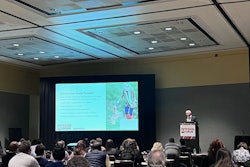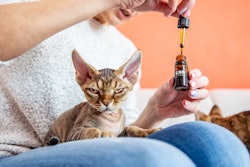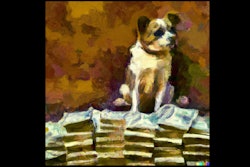
An upward price rally has derailed steady growth in pet food sales that key Eastern Europe markets had seen during the previous decade.
In 2022, sales of cat and dog food in Poland by volume decreased by 1%, estimated Szymon Mordasiewicz, commercial director of the GfK Polonia Households Panel. This was despite the fact that almost all pet parents surveyed by various opinion polls over the previous few months said they would be cutting their budgets for their pets only if left with no choice.
A recent marketing study, the Retail Price Index, regularly prepared by consulting firm UCE Research, showed pet food in Poland experienced a 25.9% price hike in 2022. As a result, the sales dynamics in volume and monetary terms differed drastically. Mordasiewicz said the value of dog and cat food sales in Poland crossed the PLN 3 billion (US$724 million) mark, reaching an all-time high.
Mixed experiences in Polish, Czech, Latvian pet food markets
Kamil Korwin, managing director of the online pet store hubun.pl, said the Polish pet food market has witnessed a struggle between two opposite trends. On the one hand, the humanization trend persists, and a growing number of Poles are seeking to feed their pets better; while on the other, accelerating inflation pushes more pet parents to opt for cheaper pet food, even though it may be poorer quality.
However, not all markets in Eastern Europe witnessed a drop in pet food sales. The Czech Republic’s largest shopping website, Heureka, estimated that the market grew slightly in 2022 compared with the previous year, while online sales spiked 5% to 20% depending on the category.
Still, the company added that the impact of inflation is seen with the naked eye, as in the animal accessories segment last year, a 32% drop in sales was recorded, while in training equipment, the slump was close to 20%.
Skyrocketing prices also make keeping a dog in Latvia a luxury, local news outlet Delfi reported. Concrete figures on pet food sales in the local market are not available, but owners of pet shops confirm trends seen in other countries: Customers are switching to cheaper products and abandoning treats and accessories.
Lower wages affect reactions to pet food inflation
Pet parents in Eastern Europe are believed to be less resilient to changing their behavior in response to inflation than those from the Western part of the continent due to lower monthly wages. For instance, in Poland, the median monthly wage in 2023 stands at PLN 6,510 (US$1,570). In the Czech Republic and Latvia, the figures are CZK 38,322 (US$1,748) and Eur 1,400 (US$1,530), respectively. In non-EU countries, the figures are even lower, as in Russia, the average monthly wage amounts to Rub 57,391 (US$762) and, in Belarus, to BRR1814 (US$721).
High inflation also has taken a toll on pet food sales in Russia and Belarus. During January-February 2023, pet food sales in Russia slumped by 19% to 26% compared to the previous year, owing to several factors, including supply disruptions of imported pet food, which further fueled the upward price dynamics on the market, the Russian newspaper Kommersant reported.
Tatyana Kolchanova, general director of the Russian Union of zoo business, attributed the negative dynamics to a high base effect and expressed hopes that with the growth of imports from alternative regions, including China, Turkey and India, the market situation would stabilize.
Price caps in Belarus do the job
The picture, however, is slightly different in Belarus, thanks to Decree 713, under which the government has imposed price caps on some goods in retail, including pet food. Still, a survey conducted by a Belarussian independent news outlet showed that this step drove the closures of independent pet shops across the country and further narrowed the range of products on the market. One pet shop owner, for example, estimated the decision cost him around 15% to 20% of revenue.
“As I speak with other pet food shops, I see that everyone is in survival mode; nobody is making any plans,” an owner of a pet food shop told the publication.
Despite the price regulation, Belarussian customers are also switching to cheaper pet food. No reliable statistical information on pet food sales in the Belarussian market is available, but local market players surveyed by the publication said that in physical terms, the market remains close to 2022’s level.


















